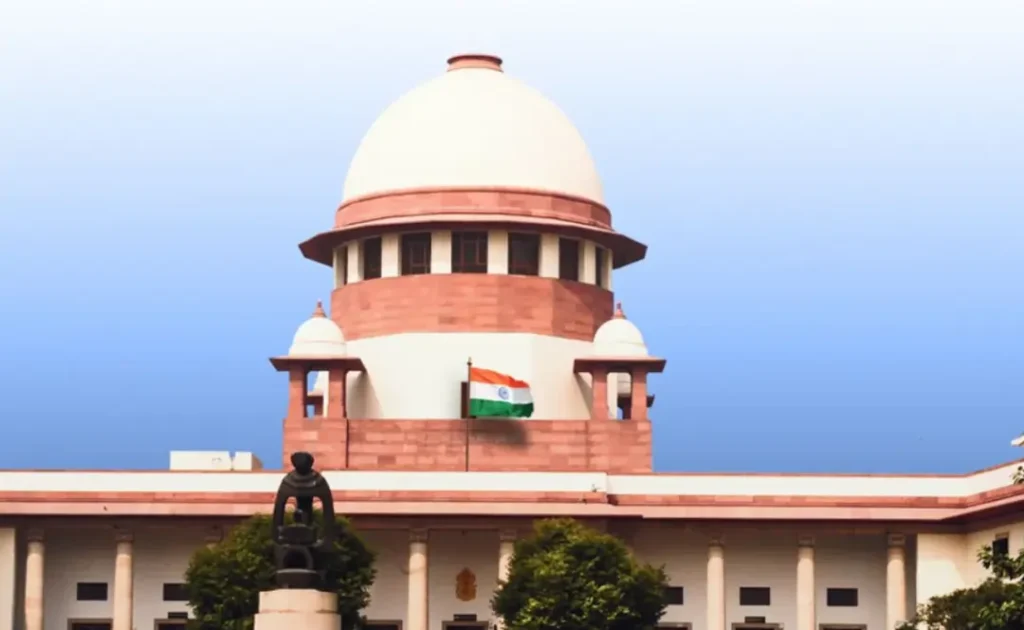New Delhi: In a groundbreaking decision that addresses longstanding inequalities, India’s Supreme Court has stepped in to protect transgender individuals by forming a specialized committee tasked with creating a comprehensive National Equal Opportunity Policy. This ruling, delivered on October 17, 2025, stems from the case of Jane Kaushik v. Union of India & Ors., where the court not only criticized the central and state governments for their inaction but also spotlighted critical flaws in the Transgender Persons (Protection of Rights) Act, 2019. The verdict highlights the pervasive discrimination transgender people face in education, employment, and daily life, urging immediate reforms. As transgender rights gain momentum in India, this judgment could reshape societal inclusion and legal protections for the third gender.

Background of the Jane Kaushik Case: Discrimination in Education and Employment
The catalyst for this historic ruling was a petition filed by Jane Kaushik, a transwoman and educator from Delhi. Kaushik alleged that she was compelled to resign from a school in Lakhimpur Kheri, Uttar Pradesh, in December 2022, after enduring body shaming, harassment, and derogatory remarks related to her gender identity. She claimed the school threatened to withhold her dues if she did not step down. Subsequently, in July 2023, she secured a teaching position at a school in Gujarat, but the offer was withdrawn once her transgender status was revealed, and she was barred from entering the premises.
The Supreme Court Bench, comprising Justices J.B. Pardiwala and R. Mahadevan, heard the case and found the Gujarat school’s actions to be a clear violation of the 2019 Act. While the Uttar Pradesh school’s conduct was deemed not entirely faultless, the court stopped short of labeling it as deliberate discrimination. To address the harm, the Bench ordered the Gujarat school to compensate Kaushik with ₹50,000 within one month. Additionally, holding the governments accountable for their “inaction and lethargy,” the court directed the Union government to pay ₹50,000, and the states of Uttar Pradesh and Gujarat to each provide ₹50,000 within four weeks. This financial redress underscores the court’s view that state failures contributed to the lack of effective grievance mechanisms.
Kaushik’s plea also challenged a January 2023 report by a district-level inquiry committee set up by the National Commission for Women (NCW), which had cleared the Uttar Pradesh school and dismissed her claims as “baseless.” She contested this finding directly in the Supreme Court, arguing it failed to recognize the structural biases against transgender persons.
Supreme Court’s Critique: “Gross Apathy” and Systemic Failures
The court minced no words in condemning the “grossly apathetic attitude” of the Centre and states toward transgender integration. Despite the landmark 2014 NALSA judgment (National Legal Services Authority v. Union of India), which recognized transgender persons as the “third gender” and a socially and educationally backward class eligible for reservations in education and public jobs, implementation has been dismal. The Bench noted a “complete lack of implementation of measures” to curb discrimination in public and private sectors.
Further, the 2019 Transgender Persons Act, intended to safeguard rights, has been undermined by administrative shortcomings. The court pointed out that linking benefits to an identification card creates unnecessary complexity, potentially excluding many. It criticized the requirement for gender identity certification by a District Magistrate (DM), which infringes on the right to self-identification. Other issues include inadequate reasonable accommodations in public spaces like schools and ‘Garima Greh’ shelter homes, and the failure of most states to set up Transgender Protection Cells.
Societal stigma was another focal point, with the judgment emphasizing the need for greater social acceptance, awareness, and empathy. The Bench invoked Article 14 of the Constitution, stressing that equality demands “reasonable accommodation” – a positive duty on the state to level the playing field for marginalized groups. Discrimination, it observed, manifests not just through actions but also through “omissions, silences, exclusions, and failures” in the law.
Referencing its 2022 ruling in Shavani Ponnusamy v. Ministry of Civil Aviation, the court lamented the lack of progress on policies for transgender employment accommodations. Only Odisha and Kerala have made notable strides in comprehensive measures, revealing “serious inertia” elsewhere. The judgment accused the Union of India, Uttar Pradesh, Gujarat, Ministries of Education and Social Justice, and the Central Board of Secondary Education of “omissive discrimination” by neglecting compliance with the 2019 Act and 2020 Rules.
Key Provisions of the Transgender Persons (Protection of Rights) Act, 2019
At the heart of the discussion is the 2019 Act, which defines a transgender person as someone whose gender does not match the one assigned at birth. It grants the right to self-perceived gender identity, with a Certificate of Identity issued by the DM enabling access to rights under the law. The Act prohibits discrimination in education, employment, housing, and other areas.
Government obligations include formulating welfare schemes for full societal participation, such as vocational training and healthcare. It also mandates the establishment of the National Council for Transgender Persons to oversee these efforts.
However, the Supreme Court identified gaps: the certification process burdens self-identification, administrative inefficiencies persist, and enforcement is weak. The ruling calls for streamlining name and gender change procedures while safeguarding privacy.
Additional Welfare Measures for Transgender Persons
Beyond the Act, several initiatives have aimed at transgender upliftment. The 2014 NALSA judgment was a milestone, legally affirming the third gender. The National Portal for Transgender Persons allows obtaining identity certificates and cards without physical visits, reducing barriers.
The SMILE (Support for Marginalized Individuals for Livelihood and Enterprise) Scheme provides comprehensive welfare, including rehabilitation and livelihood support. Yet, the court noted these measures fall short without robust implementation.
Comprehensive Directions Issued by the Supreme Court
Exercising powers under Article 142 for complete justice, the Bench issued sweeping directives to enforce the 2019 Act:
- Every state and Union Territory must appoint an appellate authority for appeals against DM orders.
- Welfare boards for transgender persons must be created.
- Transgender Protection Cells in each district, supervised by the DM and Director General of Police, to monitor offenses, ensure FIR registration, investigation, and prosecution.
- All establishments to appoint complaint officers per Section 11 of the Act and Rule 13(1) of the 2020 Rules.
- In the absence of dedicated forums, State Human Rights Commissions will handle grievances against complaint officers.
- A nationwide toll-free helpline to report violations, with details forwarded to protection cells for swift action.
The Centre, states, and Union Territories must comply within three months.
Formation of the Advisory Committee: Composition and Mandate
To draft the National Equal Opportunity Policy, the court constituted a committee chaired by former Delhi High Court judge Justice Asha Menon. Members include transgender activists Akkai Padmashali, Grace Banu, and Vyjayanti Vasanta Mogli; Sourav Mandal, Associate Professor at Jindal Global Law School; Nithya Rajshekhar, Senior Research Associate at the Centre for Law and Policy Research; Air Commodore (Retd.) Dr. Sanjay Sharma, CEO of the Association for Transgender Health in India; and senior advocate Jayna Kothari as amicus curiae.
Ex-officio members: Secretaries from Ministries of Social Justice and Empowerment, Women and Child Development, Health and Family Welfare, Education, Labour and Employment, Personnel and Training, and Legal Affairs.
The committee’s six-month mandate includes:
- Framing a model equal opportunity policy.
- Identifying gaps in the 2019 Act and Rules, proposing fixes.
- Boosting transgender participation in workplaces and public spaces.
- Simplifying gender and name change processes with privacy protections.
- Establishing effective grievance redressal.
- Recommending inclusive healthcare steps.
- Protecting rights of gender-nonconforming and non-binary persons without bureaucratic hurdles.
Broader Implications: Securing the Future of the Third Gender
The Bench expressed optimism, stating, “With this judgment, the future of the third gender should be secure.” It added that the ruling “will go a long way in protecting the rights of transgender persons.” Until the Centre enacts a policy, institutions must follow these guidelines.
This verdict builds on prior notices issued by the Supreme Court in 2024, under Chief Justice D.Y. Chandrachud, seeking responses from the Centre, Uttar Pradesh, and Gujarat. It also aligns with statements that no separate job policy for transgenders is under consideration, emphasizing integration into existing quotas for marginalized groups.
In related contexts, the court has addressed pleas for reservations in education and employment, and inclusive sexuality education. External reports mention incidents like transgender suicides in Indore due to unmet demands, underscoring urgency.
Challenges Ahead: Societal and Bureaucratic Hurdles
Deep-rooted stigma remains a barrier, with the judgment calling for empathy and awareness. Administrative failures, like unestablished protection cells, highlight the need for bureaucratic will. The committee’s work could bridge these gaps, ensuring transgender persons access benefits without exclusion.
Healthcare inclusivity is another priority, with recommendations expected to make medical care more accessible. The ruling also touches on protecting gender-diverse individuals, expanding beyond binary norms.
Conclusion: A Step Toward True Equality
This Supreme Court intervention marks a pivotal moment for transgender rights in India. By forming the committee and issuing enforceable directions, it confronts apathy head-on, paving the way for a more inclusive society. As Jane Kaushik’s case illustrates, individual stories of discrimination can drive systemic change. With compliance deadlines looming, stakeholders must act swiftly to honor the third gender’s constitutional rights.
FAQs
1. What was the main outcome of the Supreme Court judgment in Jane Kaushik v. Union of India on October 17, 2025?
The Supreme Court formed a committee headed by former Delhi High Court judge Justice Asha Menon to draft a National Equal Opportunity Policy for transgender persons within six months. It also issued directives for states to set up protection cells, appellate authorities, welfare boards, and a nationwide toll-free helpline, while ordering ₹1.5 lakh in total compensation for petitioner Jane Kaushik from the Gujarat school, Union government, and UP/Gujarat states.
2. Why did Jane Kaushik file the petition, and what compensation did she receive?
Jane Kaushik, a transwoman teacher, alleged forced resignation from a Uttar Pradesh school in 2022 due to harassment and denial of a job in Gujarat in 2023 after her gender identity was revealed. The court awarded her ₹50,000 from the Gujarat school (for violating the 2019 Act), ₹50,000 from the Union government, and ₹50,000 each from UP and Gujarat governments for their “inaction and lethargy” in enforcing transgender protections.
3. What are the key flaws in the Transgender Persons (Protection of Rights) Act, 2019, highlighted by the Supreme Court?
The court criticized the Act for linking benefits to a District Magistrate-issued identity certificate, which complicates self-identification and excludes many; lack of reasonable accommodations in public spaces like schools and Garima Greh shelters; failure of most states to establish Transgender Protection Cells; and overall poor implementation despite prohibitions on discrimination in education and employment.
4. Who are the members of the Supreme Court-appointed committee for the Equal Opportunity Policy?
Chaired by Justice Asha Menon, it includes transgender activists Akkai Padmashali, Grace Banu, and Vyjayanti Vasanta Mogli; Sourav Mandal (Jindal Global Law School); Nithya Rajshekhar (Centre for Law and Policy Research); Dr. Sanjay Sharma (Association for Transgender Health in India); and senior advocate Jayna Kothari (amicus curiae). Ex-officio members are secretaries from key ministries like Social Justice, Health, Education, and Labour.
5. What immediate actions must states and the Centre take under the Supreme Court directives?
Within three months, every state/UT must appoint appellate authorities for DM orders, create district-level Transgender Protection Cells (supervised by DM and DGP), establish welfare boards, mandate complaint officers in all establishments, and launch a toll-free helpline for violations. State Human Rights Commissions will handle grievances until dedicated forums are ready.

